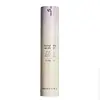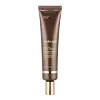What's inside
What's inside
 Key Ingredients
Key Ingredients

 Benefits
Benefits

 Concerns
Concerns

 Ingredients Side-by-side
Ingredients Side-by-side

Water
Skin ConditioningCaprylic/Capric Triglyceride
MaskingHydrogenated Polyisobutene
EmollientGlycerin
HumectantHelianthus Annuus Seed Oil
Emollient1,2-Hexanediol
Skin ConditioningBakuchiol
AntimicrobialC14-22 Alcohols
Emulsion StabilisingPotassium Cetyl Phosphate
EmulsifyingC12-20 Alkyl Glucoside
EmulsifyingOryza Sativa Extract
AbsorbentArginine
MaskingAcrylates/C10-30 Alkyl Acrylate Crosspolymer
Emulsion StabilisingPhyllostachys Pubescens Shoot Bark Extract
Skin ConditioningDisodium EDTA
Retinol 0.08%
Skin ConditioningAspergillus Ferment
Skin ConditioningEthylhexylglycerin
Skin ConditioningPolyglyceryl-10 Stearate
Skin ConditioningXanthan Gum
EmulsifyingAdenosine
Skin ConditioningHydrogenated Lecithin
EmulsifyingGlyceryl Stearate
EmollientPolyglyceryl-2 Stearate
EmulsifyingCeramide NP
Skin ConditioningDipropylene Glycol
HumectantStearyl Alcohol
EmollientPanax Ginseng Root Extract
EmollientGlucose
HumectantHydroxyacetophenone
AntioxidantButylene Glycol
HumectantCaprylyl Glycol
EmollientCyclodextrin
AbsorbentWater, Caprylic/Capric Triglyceride, Hydrogenated Polyisobutene, Glycerin, Helianthus Annuus Seed Oil, 1,2-Hexanediol, Bakuchiol, C14-22 Alcohols, Potassium Cetyl Phosphate, C12-20 Alkyl Glucoside, Oryza Sativa Extract, Arginine, Acrylates/C10-30 Alkyl Acrylate Crosspolymer, Phyllostachys Pubescens Shoot Bark Extract, Disodium EDTA, Retinol 0.08%, Aspergillus Ferment, Ethylhexylglycerin, Polyglyceryl-10 Stearate, Xanthan Gum, Adenosine, Hydrogenated Lecithin, Glyceryl Stearate, Polyglyceryl-2 Stearate, Ceramide NP, Dipropylene Glycol, Stearyl Alcohol, Panax Ginseng Root Extract, Glucose, Hydroxyacetophenone, Butylene Glycol, Caprylyl Glycol, Cyclodextrin
Water
Skin ConditioningDipropylene Glycol
HumectantButylene Glycol
HumectantGlycerin
HumectantPropanediol
Solvent1,2-Hexanediol
Skin ConditioningNiacinamide
SmoothingMacadamia Integrifolia Seed Oil
Skin ConditioningOlea Europaea Fruit Oil
MaskingSimmondsia Chinensis Seed Oil
EmollientVitis Vinifera Seed Oil
EmollientMacadamia Ternifolia Seed Oil
EmollientRetinal
Skin ConditioningSodium Hyaluronate
HumectantHydrolyzed Collagen
EmollientChitosan
Centella Asiatica Extract
CleansingCentella Asiatica Leaf Extract
Skin ConditioningCentella Asiatica Root Extract
Skin ConditioningCoco-Caprylate/Caprate
EmollientSqualane
EmollientPolyglyceryl-3 Distearate
EmulsifyingDimethyl Isosorbide
SolventPentylene Glycol
Skin ConditioningPanthenol
Skin Conditioning4-T-Butylcyclohexanol
MaskingHydrogenated Lecithin
EmulsifyingHydroxyethyl Acrylate/Sodium Acryloyldimethyl Taurate Copolymer
Emulsion StabilisingAcrylates/C10-30 Alkyl Acrylate Crosspolymer
Emulsion StabilisingSucrose Palmitate
EmollientCaprylic/Capric Triglyceride
MaskingHydroxypinacolone Retinoate
Skin ConditioningDiethylhexyl Syringylidenemalonate
Skin ProtectingTromethamine
BufferingEthylhexylglycerin
Skin ConditioningGlyceryl Stearate Citrate
EmollientAllantoin
Skin ConditioningBiosaccharide Gum-1
HumectantDipotassium Glycyrrhizate
HumectantAdenosine
Skin ConditioningRetinol
Skin ConditioningBakuchiol
AntimicrobialRetinyl Palmitate
Skin ConditioningBrassica Campestris Sterols
EmollientLinoleic Acid
CleansingCholesterol
EmollientPolyglyceryl-10 Laurate
Skin ConditioningCeramide NP
Skin ConditioningPPG-13-Decyltetradeceth-24
EmulsifyingRetinyl Linoleate
Skin ConditioningPhytosteryl/Behenyl/Octyldodecyl Lauroyl Glutamate
Skin ConditioningBeta-Glucan
Skin ConditioningAluminum/Magnesium Hydroxide Stearate
Emulsion StabilisingPentaerythrityl Tetra-Di-T-Butyl Hydroxyhydrocinnamate
AntioxidantPotassium Cetyl Phosphate
EmulsifyingPolyglyceryl-3 Methylglucose Distearate
EmulsifyingSilica
AbrasiveIsopropyl Lauroyl Sarcosinate
Skin ConditioningTocopherol
AntioxidantRetinyl Retinoate
Skin ConditioningTris(Tetramethylhydroxypiperidinol)Citrate
StabilisingBenzotriazolyl Dodecyl P-Cresol
UV AbsorberXanthan Gum
EmulsifyingDisodium EDTA
Parfum
MaskingWater, Dipropylene Glycol, Butylene Glycol, Glycerin, Propanediol, 1,2-Hexanediol, Niacinamide, Macadamia Integrifolia Seed Oil, Olea Europaea Fruit Oil, Simmondsia Chinensis Seed Oil, Vitis Vinifera Seed Oil, Macadamia Ternifolia Seed Oil, Retinal, Sodium Hyaluronate, Hydrolyzed Collagen, Chitosan, Centella Asiatica Extract, Centella Asiatica Leaf Extract, Centella Asiatica Root Extract, Coco-Caprylate/Caprate, Squalane, Polyglyceryl-3 Distearate, Dimethyl Isosorbide, Pentylene Glycol, Panthenol, 4-T-Butylcyclohexanol, Hydrogenated Lecithin, Hydroxyethyl Acrylate/Sodium Acryloyldimethyl Taurate Copolymer, Acrylates/C10-30 Alkyl Acrylate Crosspolymer, Sucrose Palmitate, Caprylic/Capric Triglyceride, Hydroxypinacolone Retinoate, Diethylhexyl Syringylidenemalonate, Tromethamine, Ethylhexylglycerin, Glyceryl Stearate Citrate, Allantoin, Biosaccharide Gum-1, Dipotassium Glycyrrhizate, Adenosine, Retinol, Bakuchiol, Retinyl Palmitate, Brassica Campestris Sterols, Linoleic Acid, Cholesterol, Polyglyceryl-10 Laurate, Ceramide NP, PPG-13-Decyltetradeceth-24, Retinyl Linoleate, Phytosteryl/Behenyl/Octyldodecyl Lauroyl Glutamate, Beta-Glucan, Aluminum/Magnesium Hydroxide Stearate, Pentaerythrityl Tetra-Di-T-Butyl Hydroxyhydrocinnamate, Potassium Cetyl Phosphate, Polyglyceryl-3 Methylglucose Distearate, Silica, Isopropyl Lauroyl Sarcosinate, Tocopherol, Retinyl Retinoate, Tris(Tetramethylhydroxypiperidinol)Citrate, Benzotriazolyl Dodecyl P-Cresol, Xanthan Gum, Disodium EDTA, Parfum
 Reviews
Reviews

Ingredients Explained
These ingredients are found in both products.
Ingredients higher up in an ingredient list are typically present in a larger amount.
1,2-Hexanediol is a synthetic liquid and another multi-functional powerhouse.
It is a:
- Humectant, drawing moisture into the skin
- Emollient, helping to soften skin
- Solvent, dispersing and stabilizing formulas
- Preservative booster, enhancing the antimicrobial activity of other preservatives
Acrylates/C10-30 Alkyl Acrylate Crosspolymer is a synthetic polymer. It is used to thicken and improve the texture of products. Due to its properties, it can prevent water and oil ingredients from separating.
Adenosine is in every living organism. It is one of four components in nucleic acids that helps store our DNA.
Adenosine has many benefits when used. These benefits include hydrating the skin, smoothing skin, and reducing wrinkles. Once applied, adenosine increases collagen production. It also helps with improving firmness and tissue repair.
Studies have found adenosine may also help with wound healing.
In skincare products, Adenosine is usually derived from yeast.
Learn more about AdenosineBakuchiol is a plant-derived antioxidant (it's vegan!). It is often called the replacement for retinol although it is not part of the same family.
It has similar effects as retinol: skin smoothing, reducing discoloration, and preventing wrinkles. It does not cause as much irritation as traditional retinoids.
Bakuchiol works by breaking down free radicals and stimulating collagen production in skin.
Combining bakuchiol with retinol will not have adverse side effects. Studies show using them will just boost the benefits. Bakuchiol is also found to help stabilize retinol.
While bakuchiol does not make the skin more sun sensitive, we recommend wearing SPF on a daily basis.
Read more about traditional retinol
Learn more about BakuchiolButylene Glycol (or BG) is used within cosmetic products for a few different reasons:
Overall, Butylene Glycol is a safe and well-rounded ingredient that works well with other ingredients.
Though this ingredient works well with most skin types, some people with sensitive skin may experience a reaction such as allergic rashes, closed comedones, or itchiness.
Learn more about Butylene GlycolThis ingredient is an emollient, solvent, and texture enhancer. It is considered a skin-softener by helping the skin prevent moisture loss.
It helps thicken a product's formula and makes it easier to spread by dissolving clumping compounds.
Caprylic Triglyceride is made by combining glycerin with coconut oil, forming a clear liquid.
While there is an assumption Caprylic Triglyceride can clog pores due to it being derived from coconut oil, there is no research supporting this.
Learn more about Caprylic/Capric TriglycerideCeramide NP is a type of ceramide.
Ceramides are intercellular lipids naturally found in our skin that bonds dead skin cells together to create a barrier. They are known for their ability to hold water and thus are a great ingredient for dry skin.
Ceramides are an important building block for our skin barrier. A stronger barrier helps the skin look more firm and hydrated. By bolstering the skin ceramides act as a barrier against irritating ingredients. This can help with inflammation as well.
If you would like to eat ceramides, sweet potatoes contain a small amount.
Read more about other common types of ceramides here:
Ceramide AP
Ceramide EOP
Dipropylene Glycol is a synthetically created humectant, stabilizer, and solvent.
This ingredient helps:
Dipropylene glycol is technically an alcohol, but it belongs to the glycol family (often considered part of the ‘good’ alcohols). This means it is hydrating and gentle on skin unlike drying solvent alcohols like denatured alcohol.
As a masking agent, Dipropylene Glycol can be used to cover the smell of other ingredients. However, it does not have a scent.
Studies show Dipropylene Glycol is considered safe to use in skincare.
Learn more about Dipropylene GlycolDisodium EDTA plays a role in making products more stable by aiding other preservatives.
It is a chelating agent, meaning it neutralizes metal ions that may be found in a product.
Disodium EDTA is a salt of edetic acid and is found to be safe in cosmetic ingredients.
Learn more about Disodium EDTAEthylhexylglycerin (we can't pronounce this either) is commonly used as a preservative and skin softener. It is derived from glyceryl.
You might see Ethylhexylglycerin often paired with other preservatives such as phenoxyethanol. Ethylhexylglycerin has been found to increase the effectiveness of these other preservatives.
Glycerin is already naturally found in your skin. It helps moisturize and protect your skin.
A study from 2016 found glycerin to be more effective as a humectant than AHAs and hyaluronic acid.
As a humectant, it helps the skin stay hydrated by pulling moisture to your skin. The low molecular weight of glycerin allows it to pull moisture into the deeper layers of your skin.
Hydrated skin improves your skin barrier; Your skin barrier helps protect against irritants and bacteria.
Glycerin has also been found to have antimicrobial and antiviral properties. Due to these properties, glycerin is often used in wound and burn treatments.
In cosmetics, glycerin is usually derived from plants such as soybean or palm. However, it can also be sourced from animals, such as tallow or animal fat.
This ingredient is organic, colorless, odorless, and non-toxic.
Glycerin is the name for this ingredient in American English. British English uses Glycerol/Glycerine.
Learn more about GlycerinHydrogenated Lecithin is created from the hydrogenation of lecithin (a group of phospholipids). Hydrogenation is a chemical reaction between hydrogen and another element.
This ingredient is an emollient and emulsifier. As an emollient, it helps soften skin by trapping moisture within. As an emulsifier, it prevents oil and water ingredients from separating.
Potassium Cetyl Phosphate is the potassium salt of a mixture. This mixture consists of the esters from phosphoricacid and cetyl alcohol.
Potassium Cetyl Phosphate is an emulsifier and cleansing agent. Emulsifiers help stabilize a product. It does this by preventing certain ingredients from separating.
As a cleansing agent, Potassium Cetyl Phosphate helps gather oils, dirts, and pollutants from your skin. This makes it easier to rinse them away with water.
Learn more about Potassium Cetyl PhosphateRetinol is a gold-standard ingredient for anti-aging. It is a form of Vitamin A and belongs to the class of retinoids that also includes tretinoin.
Why is retinol famous?
It has the most scientific studies backing up its skin benefits out of all the non-prescription ingredients.
Retinol is proven to:
This is why retinol is effective at removing wrinkles, fading dark spots, treating acne, and reducing the appearance of pores.
Studies show retinol is less effective when exposed to UV. Be sure to look for appropriate packaging to keep your retinol potent (similar to Vitamin C).
Using retinol or any retinoids will increase sun-sensitivity in the first few months. Though studies show retinoids increase your skin's natural SPF with continuous use, it is best to always wear sunscreen and sun-protection.
We recommend speaking with a medical professional about using this ingredient during pregnancy.
Retinol may cause irritation in some people, so be sure to patch test. Experts recommend 'ramping up' retinol use: start using this ingredient once a week and work up to using it daily.
Read about Tretinoin
Learn more about RetinolWater. It's the most common cosmetic ingredient of all. You'll usually see it at the top of ingredient lists, meaning that it makes up the largest part of the product.
So why is it so popular? Water most often acts as a solvent - this means that it helps dissolve other ingredients into the formulation.
You'll also recognize water as that liquid we all need to stay alive. If you see this, drink a glass of water. Stay hydrated!
Learn more about WaterXanthan gum is used as a stabilizer and thickener within cosmetic products. It helps give products a sticky, thick feeling - preventing them from being too runny.
On the technical side of things, xanthan gum is a polysaccharide - a combination consisting of multiple sugar molecules bonded together.
Xanthan gum is a pretty common and great ingredient. It is a natural, non-toxic, non-irritating ingredient that is also commonly used in food products.
Learn more about Xanthan Gum